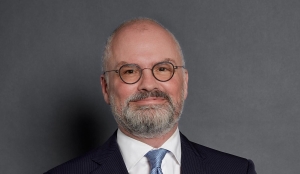Sweden’s recovery and resilience plan
The Council of the European Union, the European Parliament and the European Commission have agreed on a temporary recovery instrument, NextGenerationEU (“NGEU”), to stimulate the European economy after the COVID-19 crisis. At the heart of the NGEU is the Recovery and Resilience Facility (“RRF”), which involves €750 billion of grants and loans aimed at repairing the immediate economic and social damage brought about by the pandemic in the Member States until 31 December 2026. An auxiliary goal is to help rebuild the European Union in an environmentally sustainable, digitally developed and resilient way to be better prepared for current and future challenges.
In order to ensure that the funds paid out through the recovery package is used in a way that is in line with the above described purposes, a number of requirements have been put in place for the measures for which the RFF support is sought. For example, at least 37 per cent of the costs must be allocated to climate change and a further at least 20 per cent to digital change or challenges related to this.
Outline of the national recovery plan
The Swedish government has applied for approximately €3.2 billion (SEK 34 billion). Sweden’s recovery plan is however yet to be accepted by the Commission. The approval is predicted by the end of September, but the wait may be prolonged.
The ultimate amount that Sweden will receive in grants is to be determined no later than 30 June 2022 and depends on how the crisis has affected economic development in Sweden and other EU countries. The disbursement of funds from the facility is linked to the fact that reforms and investments are implemented based on pre-set goals and sub-goals, which must have taken place before the end of August 2026.
The Swedish recovery plan is structured around five components, involving projects that cover the entire period of the RRF until 2026, with a strong concentration of projects in the first three years of implementation.
Green recovery
40 percent of the projected costs in the Swedish recovery plan are attributable to areas that promote green recovery. Sweden has a more ambitious goal of reducing greenhouse gas emissions than the general EU, especially when it comes to domestic transport. Within the scope of the grants from the RRF, the following reforms and investments are suggested:
- Abolished reduction of energy tax on heating fuels in manufacturing, agriculture, forestry and aquaculture;
- Strengthened and simplified environmental management in the bonus – malus system for light vehicles;
- Strengthening of fuel change through gradually increasing reduction levels in the reduction obligation and diesel investments;
- Local and regional climate investments, including railway investment; and
- Support for energy efficiency of apartment buildings.
The estimated costs are SEK 16.30 billion.
Education and transition into work
The goal is to increase employment opportunities by raising human capital among the unemployed. This will be done through facilitating structural change, in particular adaptation to the increasingly digital society, by training the workforce, increased flexibility in the labour market through a modernized labour law and increased opportunities for adjustment. These goals will be met through:
- Changed labour law and increased opportunities for adjustment investments;
- Resources in regional vocational adult education; and
- Resources to meet the demand for education at universities.
The estimated costs are SEK 5.10 billion.
Better conditions for meeting the demographic challenge and ensuring the integrity of the financial system
The overarching goal is that the elderly should have access to good care and healthcare. This goal will be met through:
- Elderly care promotion;
- Extended working life and adjusted age limits in the social insurance and tax systems;
- Strengthened measures against money laundering and terrorist financing; and
- A new account and value system.
The estimated costs are SEK 4.58 billion.
Expansion of broadband and digitalisation of public administration
The objective is to expand the digital infrastructure and make public administration more efficient and effective by taking advantage of the possibilities of digitalisation. This will be done through:
- Intra-administrative digital infrastructure;
- Broadband expansion; and
- Research in digitization.
The estimated costs are SEK 4.62 billion.
Investment for growth and housing.
The overarching goal is to promote private investment, contribute to increased housing construction and improve the functioning of the housing market. This will be done through investment support for rental housing and housing for students. The estimated costs are SEK 3.00 billion.
Practical aspects
Since the Swedish recovery plan is pending approval, there is currently no applicable legislation on eligibility for funds or the implementation of the projects set out in the plan. The general implementation will, however, be based on existing public administration structures and processes regulated by Swedish statutes. All measures included in the Swedish recovery plan have been proposed in the state budget for 2020 or 2021.
The Swedish public administration has a strong tradition of internal control and evaluation, which ensures that necessary controls can be made in the implementation of the recovery plan. In addition, municipalities have a high degree of autonomy, especially in terms of regional and local spending, which makes it possible to incorporate local perspectives in the implementation of the recovery plan. The authorities responsible for managing and monitoring the use of EU funds are primarily the Swedish Agency for Economic and Regional Growth and the Swedish Energy Agency. The experience, capacity and technical expertise of these authorities facilitate the effective implementation of the recovery plan. The structure and functioning of the administration and working methods are factors that further contribute to counteracting an incorrect allocation of resources and double funding of EU funds.
The different components and sub-criteria have different target groups and requirements. It is the specific national responsible authority which manage the implementation of the initiative and the potential application rounds.
For more information, including how to access the funds, please contact Morten Nissen or Catherine Laflamme Jansson.



